Your Step-by-Step Guide to Building a Successful Daycare Business Plan
A Step-by-Step Guide for Childcare Planning with Tips to Help Entrepreneurs Start Their Daycare Business

Table of contents
- What Is Daycare and Why Should I Start One?
- Types of Daycare Providers
- Before Starting Your Daycare Business Essential Planning Steps
- Decision Journey Map Definitions
- Assess the Competition
- How to Start Your Daycare Business
- The Importance of an Execution Plan
- Execution Plan: Marketing and Sales
- Form Your Daycare Business
- Get Familiar with Daycare Licensing Requirements
- Choose Your Insurance and Liability
- How to Gain Enrollment at Your Daycare
- Invest In Childcare Experience Software to Build Your Daycare with Less Work

Build an Expert-Level Business Plan for Daycare
The childcare industry is full of passionate, hard-working individuals. Entrepreneurs just like you are starting a daycare from the ground up. In this guide, we'll give you guidance and provide templates to build a solid daycare business plan.
%20(700%20%C3%97%20700%20px)%20(800%20%C3%97%20800%20px)%20(860%20%C3%97%20860%20px)%20(940%20%C3%97%20940%20px)%20(400%20%C3%97%20400%20px)%20(900%20%C3%97%20900%20px)%20(450%20%C3%97%20900%20px)%20(450%20%C3%97%20450%20px)%20(450%20%C3%97%20300%20px)%20(450%20%C3%97%20350%20px)%20(450%20%C3%97%203-39.png)
What Is Daycare and Why Should I Start One?
According to Forbes, daycare businesses were projected to have some of the fastest employment growth of all industries through 2020. Starting a daycare is a great opportunity for aspiring business owners who have a passion for early childhood education and child development.
‘Daycare’ is an umbrella term for various childcare options (such as Montessori, head start programs, preschool, and many more) where parents and guardians drop their children off and leave them in your care to...
- Socialize with other children in their age group
- Learn basic fundamentals for future academic success
- Reach important developmental milestones
Is Starting a Daycare Business Worth It?
Starting a childcare business or franchise is profitable, emotionally rewarding, and sustainable – the need for committed childcare entrepreneurs has never been greater.
As of 2021, there were 856,238 childcare centers in the United States. The growing popularity of childcare centers comes from the demand. Parents will always need a form of care for their kids. Plus, there’s a necessity, especially beyond COVID-19, to socialize children in an environment that fosters development.
%20(700%20%C3%97%20700%20px)%20(800%20%C3%97%20800%20px)%20(860%20%C3%97%20860%20px)%20(940%20%C3%97%20940%20px)%20(400%20%C3%97%20400%20px)%20(900%20%C3%97%20900%20px)%20(450%20%C3%97%20900%20px)%20(450%20%C3%97%20450%20px)%20(450%20%C3%97%20300%20px)%20(450%20%C3%97%20350%20px)%20(450%20%C3%97%203-39.png)
%20(700%20%C3%97%20700%20px)%20(800%20%C3%97%20800%20px)%20(860%20%C3%97%20860%20px)%20(940%20%C3%97%20940%20px)%20(400%20%C3%97%20400%20px)%20(900%20%C3%97%20900%20px)%20(450%20%C3%97%20900%20px)%20(450%20%C3%97%20450%20px)%20(450%20%C3%97%20300%20px)%20(450%20%C3%97%20350%20px)%20(450%20%C3%97%203-7.png)
Types of Daycare Providers
- In-home daycare
- Relative care
- Preschool
- Independently-owned daycare
- Daycare franchises
The Difference Between Individual Centers and Franchises
An independently-owned daycare often has an individual owner, a center director, and possibly a few other administrative staff members – along with teachers, cooks, bus drivers, etc. The owner is typically an individual who puts their own money and savings into opening the daycare, so all business rights (name, branding, etc.) belong to them.
Alternatively, a daycare franchise falls under a corporate brand that has made an agreement with an individual to legally establish a business – using the company’s brand or trademark. In this scenario, the franchisee usually pays an initial fee, as well as ongoing royalties to the corporate franchisor. In return, the franchisee gains the use of a trademark, support from the franchisor, and the right to use the franchisor's system of doing business (including unique business policies and procedures, such as their method for advertising or enrollment). This model can be particularly beneficial for individuals who are passionate about early childhood education but don’t know how to get started on their own.
For example, Kids R Kids and Kiddie Academy are both successful daycare business plans in the United States. Each center operates similarly, has the same name (aside from a unique location number or city/county name), and the same branding as all locations fall under the franchisee umbrella.
Daycare Franchise Terms
- A franchisor is a daycare company that provides its services, brand, and business operations to the individual. This may also be known as a ‘franchise system’.
- A franchisee is an individual owner that is being supported by the company (franchisor). Buying into a daycare franchise makes you the franchisee.
- The franchise refers to the legal agreement between the company and the franchisee.
- The franchise disclosure document is the legally binding contract between the company and the individual.
Essential Planning Steps Before Starting Your Daycare Business
1) Conduct Market Research
When it comes to starting your childcare center, relying on assumptions about your customers and competitors leads to wasted time, money, and effort. In contrast, businesses that conduct regular market research improve customer retention and are 76% more likely to see an increase in revenue.
Market research is a data collection process that evaluates both consumer behavior, competitor habits, and industry trends to determine the viability of your center and build a foundation for future business operations.
Prepare for success upfront by conducting thorough market research to understand your competition, improve communication with your target audience, and identify new market opportunities. This research should result in actual data that you can use to drive your business and marketing strategies as you launch your center.
There are a variety of tools available to help you conduct market research - all from the comfort of your own office. Gone are the days of hiring team members with clipboards to approach consumers face-to-face. Survey Monkey, Attest, and Sprinklr all offer digital market research tools to help guide you through the process of understanding your audience, your competitors, and your industry.
%20(700%20%C3%97%20700%20px)%20(800%20%C3%97%20800%20px)%20(860%20%C3%97%20860%20px)%20(940%20%C3%97%20940%20px)%20(400%20%C3%97%20400%20px)%20(900%20%C3%97%20900%20px)%20(450%20%C3%97%20900%20px)%20(450%20%C3%97%20450%20px)%20(450%20%C3%97%20300%20px)%20(450%20%C3%97%20350%20px)%20(450%20%C3%97%203-38.png)
%20(700%20%C3%97%20700%20px)%20(800%20%C3%97%20800%20px)%20(860%20%C3%97%20860%20px)%20(940%20%C3%97%20940%20px)%20(400%20%C3%97%20400%20px)%20(900%20%C3%97%20900%20px)%20(450%20%C3%97%20900%20px)%20(450%20%C3%97%20450%20px)%20(450%20%C3%97%20300%20px)%20(450%20%C3%97%20350%20px)%20(450%20%C3%97%203-37.png)
2) Determine Your Target Market
A market segment is a group of consumers that could potentially enroll at your childcare center. First, identify your daycare target market segments and determine how big each segment is.
Be careful not to fall into the trap of defining your market as “everyone in your community.” This often leads to a ‘spray and pray’ approach to your marketing and as we know, a message for everyone really speaks to no one. When you generalize your advertising in favor of not isolating a potential consumer, you aren’t able to effectively communicate with your ideal customers – forgetting to recognize how your childcare center can appeal to them and their needs.
A classic example is a shoe manufacturer. While it would be tempting for a shoe company to say that their target market is anyone who has feet, realistically they need to target a specific segment of the market in order to be successful. If they sell adult athletic shoes, they should be building their message to target athletes or individuals who enjoy staying active and exercising. Likewise, if you offer programs for children aged 6 months to 4 years old, you should prioritize advertising toward young adults in their 20s and 30s.
A common strategy when identifying target markets is to use the TAM, SAM, and SOM approaches to look at market sizes from a top-down approach as well as a bottom-up approach.
Target Market Terms
TAM: Your Total Available or Addressable MarketThis should include everyone you wish to reach.
Example: Your entire local community.
SAM: Your Segmented Addressable Market or Served Available Market
This is a portion of the TAM you will specifically target because they align with your offerings.
Example: Families with young children.
SOM: Your Share of the Market
This is the group of your SAM that you will realistically reach—particularly in the first few years of your center’s opening, as you may expand and grow your service over time.
Example: Families with young children who make at least $65,000 each year in household income.
For childcare organizations with multiple brands, schools, or programs - increasing revenue and keeping families happy is vital for growth. Your Millennial parents need a uniform, high-quality experience, regardless of location.
Standardizing business processes has a significant impact on time savings, costs, and most notably quality. In fact, standardization improves quality by 61.9%, on average. Create consistent enrollment processes across all your franchise locations to ensure every family has a great experience and a positive association with your brand – leading to higher conversion success and profitability.
To achieve consistency, your franchisees’ marketing approach and advertising material must follow all your corporate brand guidelines. Your organization should have a lead management system that supports your childcare franchise staff as they guide families through the decision-making journey while also ensuring each location is delivering a consistent parent experience.
%20(700%20%C3%97%20700%20px)%20(800%20%C3%97%20800%20px)%20(860%20%C3%97%20860%20px)%20(940%20%C3%97%20940%20px)%20(400%20%C3%97%20400%20px)%20(900%20%C3%97%20900%20px)%20(450%20%C3%97%20900%20px)%20(450%20%C3%97%20450%20px)%20(450%20%C3%97%20300%20px)%20(450%20%C3%97%20350%20px)%20(450%20%C3%97%203-36.png)
3) Develop Your Buyer Personas
Before you begin writing your daycare marketing plan, make sure you’ve defined your market and buyer personas. Without a deep understanding of whom you’re speaking to, a daycare marketing plan will have little value.
Audience personas allow you to dive even deeper into your target market and help you understand more than just who your customer is. These identities inform you how to communicate with your customers in a way that relates to their pain points and needs.
Building a daycare business plan is no joke! Check out childcare business tips at a glance.
When you understand your customer’s motivations, you can uniquely address their concerns and questions in your marketing materials - leading to increased tours, enrollments, and revenue.
-
Start by listing out the various kinds of programs and classes you’d like to offer at your center.
-
Then, determine who the primary decision-maker is and who the primary influencers might be in each scenario.
-
Primary decision-maker: typically the individual(s) taking financial responsibility and remitting payment at your center.
-
Primary influencers: are also crucial in the purchasing process as they often have the ability to sway decision-makers.
For example, imagine you’re promoting availability for Summer camp programs at your center. In this instance, the primary decision-maker might be the parent(s) or guardian(s) whereas the primary influencer would likely be the child who’s deciding what kind of activities they want to do this Summer.
%20(700%20%C3%97%20700%20px)%20(800%20%C3%97%20800%20px)%20(860%20%C3%97%20860%20px)%20(940%20%C3%97%20940%20px)%20(400%20%C3%97%20400%20px)%20(900%20%C3%97%20900%20px)%20(450%20%C3%97%20900%20px)%20(450%20%C3%97%20450%20px)%20(450%20%C3%97%20300%20px)%20(450%20%C3%97%20350%20px)%20(450%20%C3%97%203-35.png)
Audience Overview
List the audiences, personas, or segments that you want your center’s marketing and messaging efforts to reach.
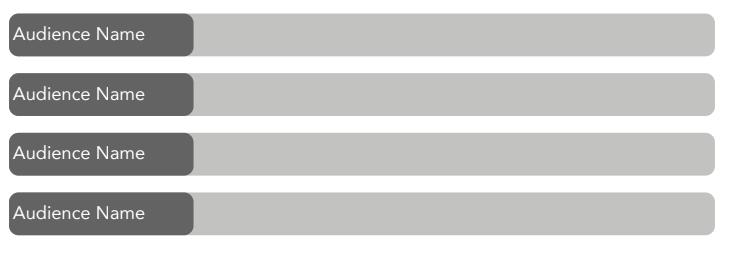
Select one audience from above and describe it to the best of your knowledge. Go beyond the traditional persona to consider motivations & behavior.
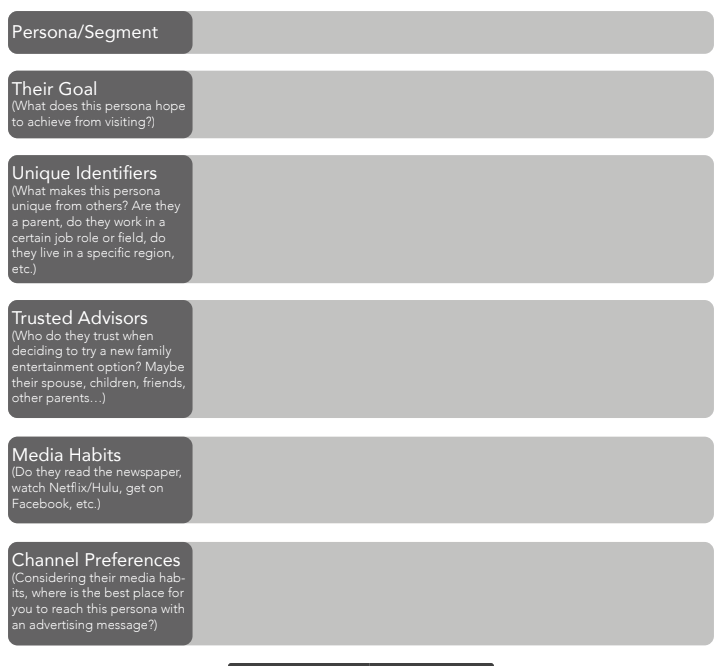
Identify the key stages in your audience’s enrollment journey from beginning to end, knowing there may be multi-dimensional steps within a stage. Complete the table for each journey at the individual stages from the specific audience’s point of view.
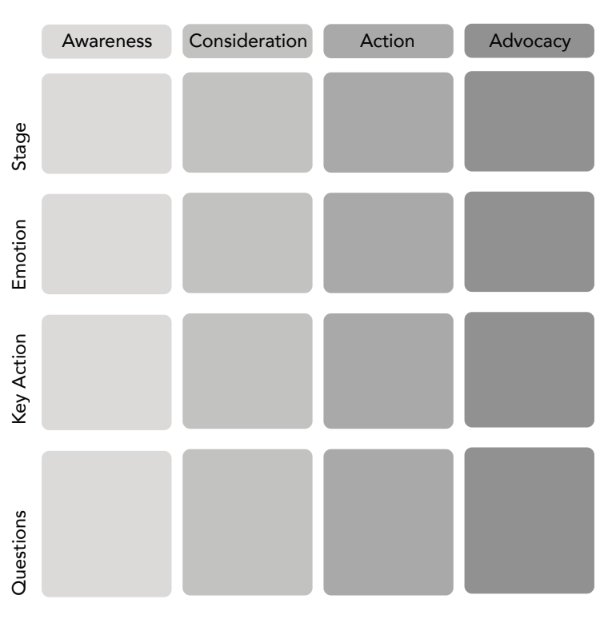
%20(700%20%C3%97%20700%20px)%20(800%20%C3%97%20800%20px)%20(860%20%C3%97%20860%20px)%20(940%20%C3%97%20940%20px)%20(400%20%C3%97%20400%20px)%20(900%20%C3%97%20900%20px)%20(450%20%C3%97%20900%20px)%20(450%20%C3%97%20450%20px)%20(450%20%C3%97%20300%20px)%20(450%20%C3%97%20350%20px)%20(450%20%C3%97%203-34.png)
Decision Journey Map Terms & Definitions
-
Stage: This refers to each stage of the enrollment journey - awareness, consideration, action, and advocacy.
-
Awareness: This is when a family is first learning of your center and your brand. They are researching multiple daycare centers and eventually send an inquiry to tour your facility or learn more.
-
Consideration: During this stage, a family is touring your center and may be deciding between you and 1-2 other providers. Tip: Proactively equip your staff with key talking points so they can highlight your unique center features.
-
Action: This is when a parent decides to register their child for care, pay fees, and is either placed on your waitlist or enrolls.
-
Advocacy: After a successful, happy experience, this parent or guardian has become an advocate for your business. They’re telling friends and family about your center. This is vital for your word-of-mouth marketing strategy.
-
Emotion: Identify what the persona is feeling at each stage of the customer’s journey. They may be anxious, curious, excited, or satisfied at various points. Put yourself in their shoes.
-
Key Actions: What actions would a consumer take at each stage? For example, during the awareness stage, they may see your ad on Facebook, look you up on Google, or visit your website. In the consideration stage, they may call your center to get more information, look at your services online, or read reviews.
-
Questions: What questions is the consumer asking in each stage? These are the questions you need to be answering for them in your advertising and marketing efforts.
%20(700%20%C3%97%20700%20px)%20(800%20%C3%97%20800%20px)%20(860%20%C3%97%20860%20px)%20(940%20%C3%97%20940%20px)%20(400%20%C3%97%20400%20px)%20(900%20%C3%97%20900%20px)%20(450%20%C3%97%20900%20px)%20(450%20%C3%97%20450%20px)%20(450%20%C3%97%20300%20px)%20(450%20%C3%97%20350%20px)%20(450%20%C3%97%203-8.png)
%20(700%20%C3%97%20700%20px)%20(800%20%C3%97%20800%20px)%20(860%20%C3%97%20860%20px)%20(940%20%C3%97%20940%20px)%20(400%20%C3%97%20400%20px)%20(900%20%C3%97%20900%20px)%20(450%20%C3%97%20900%20px)%20(450%20%C3%97%20450%20px)%20(450%20%C3%97%20300%20px)%20(450%20%C3%97%20350%20px)%20(450%20%C3%97%203-33.png)
Assess the Competition
Competitive research helps you understand why customers choose your center over other alternative care options. This information provides you with insight into how your competition is marketing their services and over time, this can help you improve your own marketing campaigns and business offerings.
Look up similar daycare centers in your area, and see what programs they offer, the type of facilities, their capacity, and their curriculum. Then, highlight the features that make your center stand out. Showcase your selling points in all marketing and advertising efforts. Get started with these key questions...
- Who are my direct competitors and what do they offer?
- Who are my indirect competitors
- What does my competition's pricing look like?
- Do they offer promotional pricing or payment plans?
- What do they do best?
- What do they do poorly?
Download the guide to stay up to date on the latest industry news, trends and best practices for growing and managing your childcare business.
%20(700%20%C3%97%20700%20px)%20(800%20%C3%97%20800%20px)%20(860%20%C3%97%20860%20px)%20(940%20%C3%97%20940%20px)%20(400%20%C3%97%20400%20px)%20(900%20%C3%97%20900%20px)%20(450%20%C3%97%20900%20px)%20(450%20%C3%97%20450%20px)%20(450%20%C3%97%20300%20px)%20(450%20%C3%97%20350%20px)%20(450%20%C3%97%203-32.png)
How to Start Your Daycare Business
Build a Daycare Business Plan
A good business plan will guide you through each stage of starting and managing your childcare organization- including how to structure, run, and grow your new business.
There’s no correct or incorrect way to write your business plan. What’s most important is that you identify your business objectives and use this document as a roadmap for how to achieve these goals.
A strong business plan can help you recruit business investors, gain funding, or find new partners. Prospective investors want to feel confident they’ll see a return on their investment and your center’s business plan is the perfect tool to assure potentials that working with you — or investing in your business— is a smart and profitable decision.
Write a Day Care Executive Summary (Daycare Business Plan Outline)
Although this section is the first thing people will read, it’s advised that you write it last, once you know the details of your business inside and out. At this stage, you will be able to articulate your business more clearly and summarize all the information in a succinct, concise manner.
Ideally, your executive summary will be able to act as a stand-alone document that covers the key highlights of your detailed business plan. In fact, it’s common for investors or loan providers to ask for just the executive summary when they start evaluating your business. If they like what they see in the executive summary, they’ll often follow up with a request for a complete plan, a pitch presentation, and more in-depth daycare business plan financials.
As your executive summary is such a critical component of your business plan, you’ll want to make sure that it’s as clear and concise as possible. Cover only the essential components of your daycare, ensuring your executive summary is one to two pages maximum. This section is intended to be a quick read that hooks your potential investors’ interest and excites them to learn more.
The executive summary is a tell-all first paragraph that details...
- The city and state of your center (you can decide on the exact location later)
- A potential open date
- A projected enrollment count (number of full-time enrollments)
- Programs you plan to offer
- Ages you hope to serve
- A quick financial summary (based on grants, funding, and potential revenue from projected enrollments)
This may seem like a lot of information upfront, but it’s simply a high-level overview of your plan.
%20(700%20%C3%97%20700%20px)%20(800%20%C3%97%20800%20px)%20(860%20%C3%97%20860%20px)%20(940%20%C3%97%20940%20px)%20(400%20%C3%97%20400%20px)%20(900%20%C3%97%20900%20px)%20(450%20%C3%97%20900%20px)%20(450%20%C3%97%20450%20px)%20(450%20%C3%97%20300%20px)%20(450%20%C3%97%20350%20px)%20(450%20%C3%97%203-31.png)
Opportunity Analysis: An Example
| Strengths | Weaknesses | Opportunities | Threats |
| What are we doing well? | Is our value proposition lacking clarity? | How can we expand our reach? | Have our conversion rates decreased? |
| Which programs make us stand out? | What can we improve? | Which childcare software can help us grow? | Are there new daycare competitors in our area? |
| Which facilities are a selling point? | Which stage(s) of our enrollment pipeline aren't performing well? | Is our daycare a competitive solution that parents trust? | Have we received any negative feedback from families? |
The opportunity analysis portion of your business plan is important for outlining what distinguishes your daycare from your direct and indirect competitors. It details how you can continue to expand and grow your center in the future.
Use your previous competitive research to determine your daycare business’s competitive advantage and position. Analyze potential strengths, weaknesses, opportunities, and threats.
%20(700%20%C3%97%20700%20px)%20(800%20%C3%97%20800%20px)%20(860%20%C3%97%20860%20px)%20(940%20%C3%97%20940%20px)%20(400%20%C3%97%20400%20px)%20(900%20%C3%97%20900%20px)%20(450%20%C3%97%20900%20px)%20(450%20%C3%97%20450%20px)%20(450%20%C3%97%20300%20px)%20(450%20%C3%97%20350%20px)%20(450%20%C3%97%203-10.png)
Problem and Solution
Describe the problem that you are solving for your customers. Childcare centers are need-oriented, meaning your consumers have tangible pain points that you must resolve to be successful.
So, what is the primary pain point for them? Maybe it’s that busy, working parents need a caring, safe place for their child during the day, or perhaps families are seeking after-school care options for their elementary-aged children, or maybe parents need 24-hour childcare options when they’re traveling or working odd hours.
Now, assess how they are solving their problems currently and where there’s room for improvement. If there's only one childcare center in your community and it has no open seats, you could be the solution. Or maybe there are lots of existing care providers in your city but they’re expensive or have rigid pickup and drop-off times that working parents have trouble meeting. Or perhaps there aren’t any existing childcare businesses within a reasonable driving distance of where you’d like to place yours.
Defining the problem you are solving for your customers is by far the most critical element of your business plan and is crucial for your daycare business’ success. If you can’t pinpoint a problem that your potential customers have, then you might not have a viable business concept.
To ensure that you are solving a real problem, try conducting your own survey with potential customers to get a better understanding of their needs and validate that they have the problem you assume they have. Then, take the next step and pitch your potential solution to their problem.
Do they agree that it’s a good fit or does it seem to fall flat? See how to come up with a strategic plan for your business.
%20(700%20%C3%97%20700%20px)%20(800%20%C3%97%20800%20px)%20(860%20%C3%97%20860%20px)%20(940%20%C3%97%20940%20px)%20(400%20%C3%97%20400%20px)%20(900%20%C3%97%20900%20px)%20(450%20%C3%97%20900%20px)%20(450%20%C3%97%20450%20px)%20(450%20%C3%97%20300%20px)%20(450%20%C3%97%20350%20px)%20(450%20%C3%97%203-30.png)
Execution Plan: Marketing and Sales
The marketing and sales plan section of your business plan details how you propose to reach your target market segments, how you plan on converting those target markets, what your pricing model looks like, and what partnerships you may need to make your center a success.
Your Positioning Statement
Once you understand your audience, the first part of your marketing and sales plan is your positioning statement. Refer back to your value proposition to create a simple, straightforward sentiment, explaining where your company sits within the competitive landscape and what differentiates your venue from the alternatives that a customer might consider. This statement should be written for an investor or loan provider, rather than for your customer.
One daycare business plan example - a positioning statement for a 24-hour childcare center in Austin, Texas may look like this:
“For the Austin-based family who is seeking childcare around the clock, Jenny’s 24-Hour Daycare is a safe option for young children with nutritional meals, best-in-industry sleeping arrangements, a clean outdoor play area, and highly trained care professionals. Jenny’s 24-Hour Daycare is the first center of its kind within 30 miles of the Austin metroplex and offers competitive pricing and tuition payment plans.”
%20(700%20%C3%97%20700%20px)%20(800%20%C3%97%20800%20px)%20(860%20%C3%97%20860%20px)%20(940%20%C3%97%20940%20px)%20(400%20%C3%97%20400%20px)%20(900%20%C3%97%20900%20px)%20(450%20%C3%97%20900%20px)%20(450%20%C3%97%20450%20px)%20(450%20%C3%97%20300%20px)%20(450%20%C3%97%20350%20px)%20(450%20%C3%97%203-9.png)
%20(700%20%C3%97%20700%20px)%20(800%20%C3%97%20800%20px)%20(860%20%C3%97%20860%20px)%20(940%20%C3%97%20940%20px)%20(400%20%C3%97%20400%20px)%20(900%20%C3%97%20900%20px)%20(450%20%C3%97%20900%20px)%20(450%20%C3%97%20450%20px)%20(450%20%C3%97%20300%20px)%20(450%20%C3%97%20350%20px)%20(450%20%C3%97%203-19.png)
Use this formula to develop a positioning statement for your center:
Your Mission Statement
Your mission statement is a scaled-down version of your positioning statement. This should be just one or two sentences that are geared toward your target consumer and describe what your business plans to accomplish. This statement usually includes company core values that explain your daycare’s purpose and how you serve your audience.
For example, Cadence Education is a leading early childhood education provider with the mission of “providing parents with peace of mind by giving children an exceptional education every fun-filled day in a place as nurturing as a home.”

Pricing
Your positioning strategy will typically determine how you price your memberships and packages. There are some basic rules that you should follow when deciding on your price point:
- Cost-plus pricing: For the most part, you should be charging your customers more than it costs you to host them at your center to ensure your venue is profitable and appealing to investors.
- Market-based pricing: Look at what your competitors are charging and then price based on what your audience is expecting.
%20(700%20%C3%97%20700%20px)%20(800%20%C3%97%20800%20px)%20(860%20%C3%97%20860%20px)%20(940%20%C3%97%20940%20px)%20(400%20%C3%97%20400%20px)%20(900%20%C3%97%20900%20px)%20(450%20%C3%97%20900%20px)%20(450%20%C3%97%20450%20px)%20(450%20%C3%97%20300%20px)%20(450%20%C3%97%20350%20px)%20(450%20%C3%97%203-29.png)
Strategic Alliances
As part of your marketing plan, you may wish to collaborate with other organizations such as local camps, after-school programs, pediatricians, or even other childcare centers that don’t offer the same activities that you do.
This partnership should benefit both of you – it may help provide access to a target market segment for your venue while allowing your partner to offer a helpful recommendation to their customers. If you’ve already established an alliance, it’s important to detail that in your business plan.
Operations
The operations section is all about how your business works. This portion details the essential logistics such as staffing and sourcing and fulfillment. But remember, your goal is to keep your business plan as short as possible, so too much detail here could easily make your plan much too long.
Milestones and Metrics
It’s critical that you take the time to look forward and schedule the next critical steps for your business. Investors will want to see that you understand what needs to happen to make your plans a reality and that you are working on a realistic schedule.
Then, determine how you will measure the success of each milestone by listing out the key performance indicators and metrics needed to see progress. These will be the numbers you monitor on a regular basis to evaluate the trajectory of your business. For example, you may look at how many families tour your center each week, how many children you enroll each month, or the amount of revenue you bring in per quarter.
Company and Management Summary
The structure of your staff and teams sets your daycare up for success. In a new daycare center, there’s typically an owner (or franchisee), a center director, staff members, an enrollment or marketing team, accounting/administration, teachers, assistants, cooks, bus drivers, and janitorial staff. For example, the average small daycare business plan includes 8-10 fully licensed and/or certified early education teachers.
%20(700%20%C3%97%20700%20px)%20(800%20%C3%97%20800%20px)%20(860%20%C3%97%20860%20px)%20(940%20%C3%97%20940%20px)%20(400%20%C3%97%20400%20px)%20(900%20%C3%97%20900%20px)%20(450%20%C3%97%20900%20px)%20(450%20%C3%97%20450%20px)%20(450%20%C3%97%20300%20px)%20(450%20%C3%97%20350%20px)%20(450%20%C3%97%203-28.png)
Financial Forecasts
A typical financial plan will have monthly sales and revenue forecasts for the first 12 months, and then annual projections for the remaining three to five years. Break your sales forecast down into several rows, focusing on just high-level buckets at this point.
Knowing how much your daycare will cost to open ahead of time can save you money, stress, and time. Daycare business plan start-up expenses vary by size, enrollment capacity, and miscellaneous needs.
Keep in mind that you can save on staffing costs and cut down on overhead with technology that helps to streamline your center’s operations. After all, 40% of Millennials prefer self-service over human contact when interacting with businesses.
It’s essential that you find ways to enable families to book tours and enroll online without ever having to make a phone call to the center- reducing time spent on necessary-but-manual tasks for both your staff and inquiring families.
Finally, articulate your profits and losses based on the data from your sales forecast and your personnel plan plus a list of all your other ongoing expenses associated with running your childcare center.
%20(700%20%C3%97%20700%20px)%20(800%20%C3%97%20800%20px)%20(860%20%C3%97%20860%20px)%20(940%20%C3%97%20940%20px)%20(400%20%C3%97%20400%20px)%20(900%20%C3%97%20900%20px)%20(450%20%C3%97%20900%20px)%20(450%20%C3%97%20450%20px)%20(450%20%C3%97%20300%20px)%20(450%20%C3%97%20350%20px)%20(450%20%C3%97%203-27.png)
%20(700%20%C3%97%20700%20px)%20(800%20%C3%97%20800%20px)%20(860%20%C3%97%20860%20px)%20(940%20%C3%97%20940%20px)%20(400%20%C3%97%20400%20px)%20(900%20%C3%97%20900%20px)%20(450%20%C3%97%20900%20px)%20(450%20%C3%97%20450%20px)%20(450%20%C3%97%20300%20px)%20(450%20%C3%97%20350%20px)%20(450%20%C3%97%203-22.png)
See this Formula for Financial Forecasts
Step 1: Average cost of tuition per child x your expected enrollments x 12 (annual revenue – assuming each family enrolls their child in one of your summer programs).
Step 2: Daycare businesses make around 16% profit from their overall revenue, after daycare expenses. Multiply your number from step 1 by .16 to get your predicted profit.
Example: Let’s say you plan to charge families an average of $315 per week for childcare. With that, your goal is to enroll 60 students by the time your daycare center opens. Multiply $315 x 60 x 12 (annual revenue). This should come out to $226,800. Lastly, multiply your revenue of $226,800 by .16, which equals a net profit of $36,288 per year.
Consider Various Funding Sources
Depending on your situation, there’s both loan and grant funding in childcare. Between state tax credits, loans, and grants – there are financing options for a variety of situations.
Review Your Tax Deduction Options
Collecting tax credits is one way to receive an annual deduction on daycare costs. Based on your state, you can claim tax credits for...

Collect Daycare Grants for Your Business
Often, startup costs for opening a daycare are high. Certain states and counties offer grants for new daycare businesses. There are several grant options, depending on your child and family details.
For example, there’s a Preschool Development Grant Program and a Head Start/Early Head Start grant to provide funding that expands early childhood centers and developmental programs.
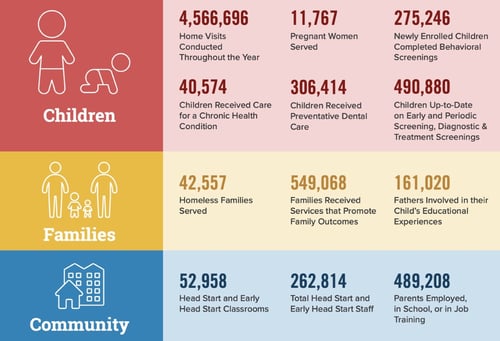
%20(700%20%C3%97%20700%20px)%20(800%20%C3%97%20800%20px)%20(860%20%C3%97%20860%20px)%20(940%20%C3%97%20940%20px)%20(400%20%C3%97%20400%20px)%20(900%20%C3%97%20900%20px)%20(450%20%C3%97%20900%20px)%20(450%20%C3%97%20450%20px)%20(450%20%C3%97%20300%20px)%20(450%20%C3%97%20350%20px)%20(450%20%C3%97%203-20.png)
Know Which Loans Are Available to Daycare Business Owners
While grants are a wonderful option for freshly opened daycare businesses, loans are occasionally easier to come by. They’re offered widely and often have fewer requirements to qualify. Check out a few loan examples for your daycare center.
- SBA Loans, otherwise known as Small Business Administration loans, have exceptional rates, low interest, and flexible repayment options.
- SBA 7(a) Loans are beneficial for covering pricier equipment funds and real estate. Loans of up to $5 million are available to daycares.
- SBA 504 Loans – these are wonderful for business expansions and involve a loan for 50% of the project cost.
%20(700%20%C3%97%20700%20px)%20(800%20%C3%97%20800%20px)%20(860%20%C3%97%20860%20px)%20(940%20%C3%97%20940%20px)%20(400%20%C3%97%20400%20px)%20(900%20%C3%97%20900%20px)%20(450%20%C3%97%20900%20px)%20(450%20%C3%97%20450%20px)%20(450%20%C3%97%20300%20px)%20(450%20%C3%97%20350%20px)%20(450%20%C3%97%203-23.png)
%20(700%20%C3%97%20700%20px)%20(800%20%C3%97%20800%20px)%20(860%20%C3%97%20860%20px)%20(940%20%C3%97%20940%20px)%20(400%20%C3%97%20400%20px)%20(900%20%C3%97%20900%20px)%20(450%20%C3%97%20900%20px)%20(450%20%C3%97%20450%20px)%20(450%20%C3%97%20300%20px)%20(450%20%C3%97%20350%20px)%20(450%20%C3%97%203-18.png)
Take Actionable Steps to Bring Your Daycare Business to Life
Both Limited Liability Companies and Incorporations offer the significant legal advantage of helping to protect assets from creditors and provide an extra layer of protection against legal liability.
The main difference between an LLC and a corporation is that an LLC is owned by one or more individuals, and a corporation is owned by its shareholders. In general, the creation and management of an LLC are considered simpler and more flexible than that of a corporation.
Find the Right Vendors
Choosing the right suppliers for your business is essential. If your vendors aren’t reliable or don’t deliver quality products, your new center will struggle to attract families. As a childcare provider, you will likely need the following vendors at one point or another:
- Electrician
- Plumber
- Food and Beverage Supplier
- Educational Materials Supplier
- Substitute Staffing Provider
- Accountant
- Childcare Licensing Consultant
- Cleaning & Maintenance
- Childcare Management System (CMS)
- Customer Relationship Management (CRM) Software
- Digital Payments Provider
- Online Forms Software
- Childcare Experience Software
Get Familiar with Daycare Licensing Requirements
All states have different daycare licensing requirements. Generally, you'll follow the steps below.
1) Take a Course
Attend and complete a pre-application course (you’ll receive a certificate at the end – remember to save it).
2) Submit Your Application
Submit your online licensing application. It'll ask for details about your business that were outlined in the executive summary.
3) Pay Fees
Pay your application fees. The fee depends on your center's capacity or the number of children you plan to enroll.
4) Complete Inspections
An inspection of your business property must be conducted.
5) Submit Your Service Payment
Register and pay for the inspection.
6) Conduct Background Checks
Submit background checks (this may also be an additional charge).
%20(700%20%C3%97%20700%20px)%20(800%20%C3%97%20800%20px)%20(860%20%C3%97%20860%20px)%20(940%20%C3%97%20940%20px)%20(400%20%C3%97%20400%20px)%20(900%20%C3%97%20900%20px)%20(450%20%C3%97%20900%20px)%20(450%20%C3%97%20450%20px)%20(450%20%C3%97%20300%20px)%20(450%20%C3%97%20350%20px)%20(450%20%C3%97%203-24.png)
%20(700%20%C3%97%20700%20px)%20(800%20%C3%97%20800%20px)%20(860%20%C3%97%20860%20px)%20(940%20%C3%97%20940%20px)%20(400%20%C3%97%20400%20px)%20(900%20%C3%97%20900%20px)%20(450%20%C3%97%20900%20px)%20(450%20%C3%97%20450%20px)%20(450%20%C3%97%20300%20px)%20(450%20%C3%97%20350%20px)%20(450%20%C3%97%203-25.png)
Choose Your Insurance and Liability
- Provide general liability – stay covered if your center has any property damage or injuries to third parties (children).
- Abuse coverage protects your childcare business or franchise. If employees turn out to be abusive towards children, this policy covers defense costs and defends you against financial losses.
- Professional liability insurance provides coverage for your business and workers if there is a neglect claim.
- Hired and non-owned auto liability ensures everyone is covered if there is a pick-up/drop-off vehicle accident.
*Liability requirements may vary by state.
How to Gain Enrollment at Your Daycare
From a business owner's perspective, the next step after successfully starting your daycare is to grow your center and gain enrollments.
Begin by building a strong company culture, actively marketing your daycare center, and finding the right childcare technology to optimize your enrollment process and save time.
See how to elevate your business plan for daycare with better waitlist management.
Create a Culture Where Staff Want to Work
A daycare center that stands out from the rest has happy staff members that want to work hard. Create a diverse employee culture that feels comfortable openly talking about situations. Provide support, patience, and room for growth. See more tips for creating a healthy and positive culture for your daycare staff.
%20(700%20%C3%97%20700%20px)%20(800%20%C3%97%20800%20px)%20(860%20%C3%97%20860%20px)%20(940%20%C3%97%20940%20px)%20(400%20%C3%97%20400%20px)%20(900%20%C3%97%20900%20px)%20(450%20%C3%97%20900%20px)%20(450%20%C3%97%20450%20px)%20(450%20%C3%97%20300%20px)%20(450%20%C3%97%20350%20px)%20(450%20%C3%97%203-15.png)
%20(700%20%C3%97%20700%20px)%20(800%20%C3%97%20800%20px)%20(860%20%C3%97%20860%20px)%20(940%20%C3%97%20940%20px)%20(400%20%C3%97%20400%20px)%20(900%20%C3%97%20900%20px)%20(450%20%C3%97%20900%20px)%20(450%20%C3%97%20450%20px)%20(450%20%C3%97%20300%20px)%20(450%20%C3%97%20350%20px)%20(450%20%C3%97%203-26.png)
Market Your Center
A daycare marketing strategy starts with an achievable goal. Do you want to fill your enrollment spots? Do you want to build a waitlist? Should you focus on scheduling more tours or gaining new leads?
Choose a goal with measurable results. That way, you can track and analyze your marketing performance. When it comes to how to promote daycare business, marketing helps families realize you're the best childcare center on the block. Promote your centers through...
- Social media (especially Facebook – 83% of Millennials have a Facebook account).
- Landing pages and contact forms on your website
- Listing directories
- Email and text marketing campaigns
- Referrals
- Digital advertisements
- Flyers
- Word-of-mouth marketing
Tip: childcare experience software that automates the reports you need helps you to save time and improve your return on investment (ROI). For example, a Source of Families report shows you where your leads are coming from to optimize your efforts.
Invest In Childcare Experience Software to Build Your Daycare with Less Work
LineLeader is revolutionary childcare software that automates lead capture, follow-up, scheduling tours, and reports. Craft beautiful, personalized marketing campaigns to continually grow your business. Plus, easily manage your curriculum, attendance, and billing with automated center management
Get more from your marketing while saving franchisees 10 hours every week with LineLeader. Automate everything from lead capture and reporting to center management—all from one place.
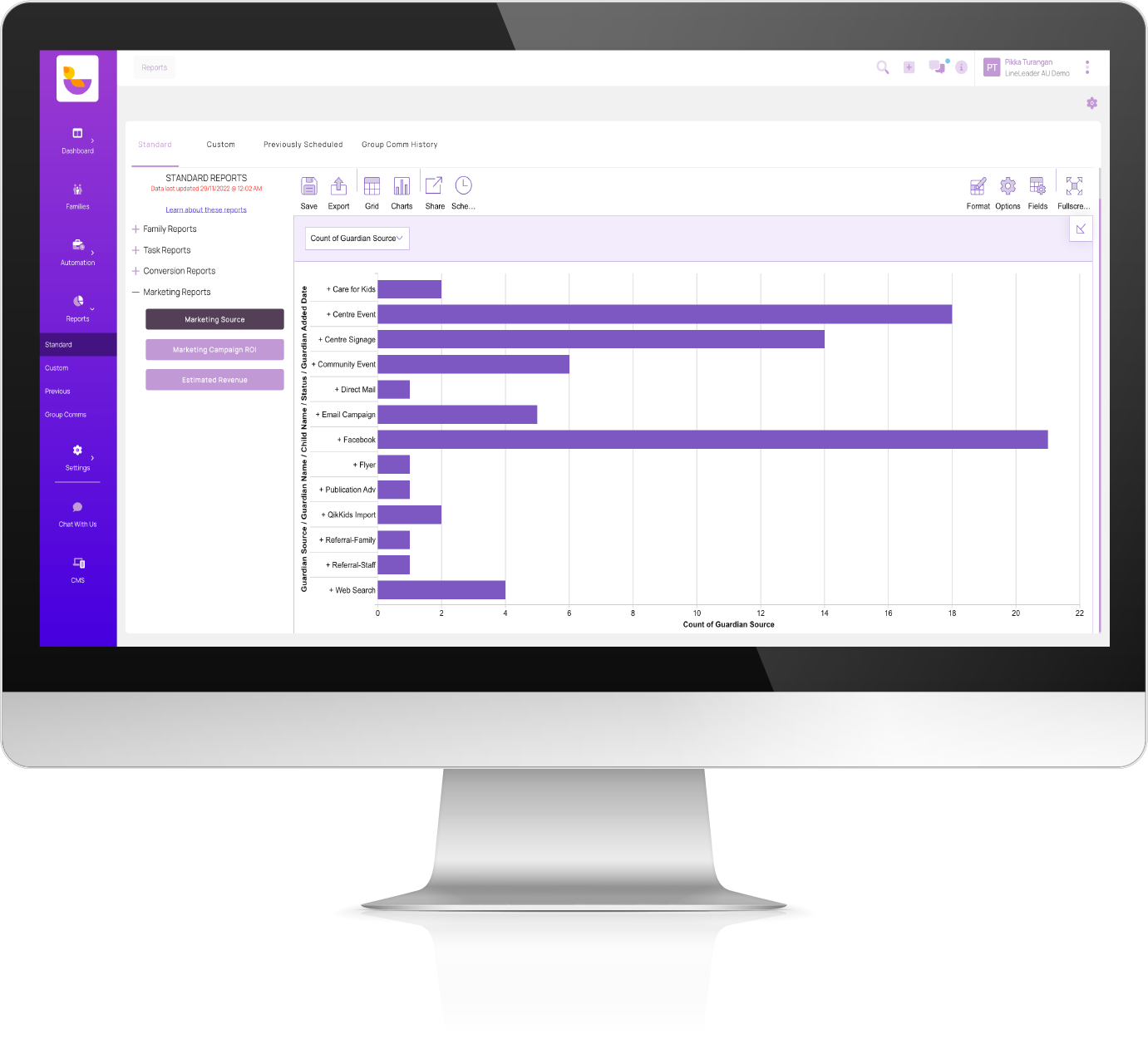
Download the guide to stay up to date on the latest industry news, trends and best practices for growing and managing your childcare business.
Resources to help you run your childcare business.



Additional Resources
For more information on specific childcare resources regarding marketing tools, campaigns, tips, and best practices - see below.
1. Learn hidden secrets no one tells you about starting a childcare business.
2. See how to operate in childcare licensing excellence to boost enrollment.
3. Beth Fiori of Tiny Treasures provides expert tips. check out ways to improve your business plan for daycare with enhanced waitlist management.
4. Discover tips to maintain the best childcare center on the block.
5. Gain advice for strengthening your daycare staff culture.
6. Learn the benefits of building a daycare business plan, at a glance.
LineLeader Video Resources

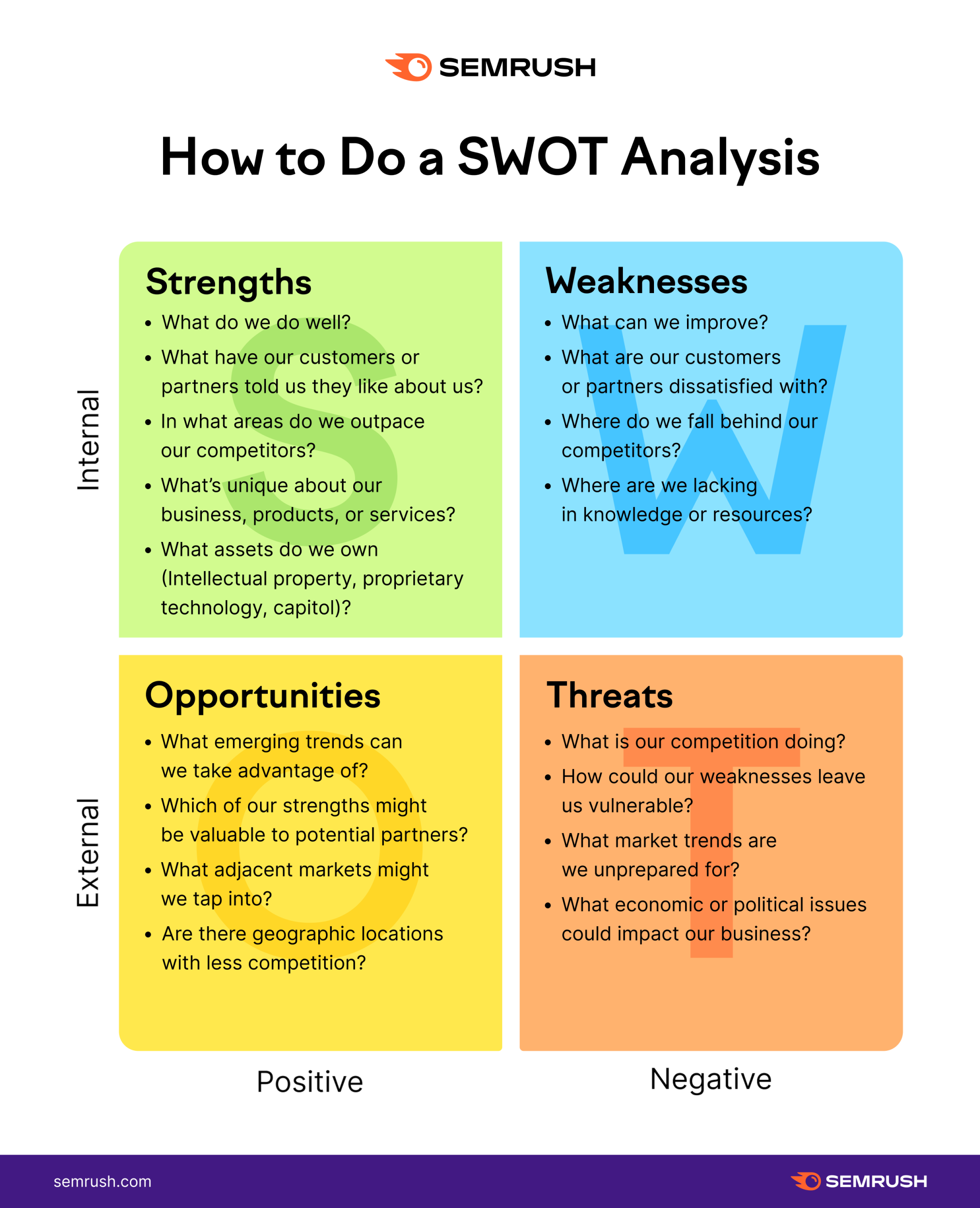
%20(700%20%C3%97%20700%20px)%20(800%20%C3%97%20800%20px)%20(860%20%C3%97%20860%20px)%20(940%20%C3%97%20940%20px)%20(400%20%C3%97%20400%20px)%20(900%20%C3%97%20900%20px)%20(450%20%C3%97%20900%20px)%20(450%20%C3%97%20450%20px)%20(450%20%C3%97%20300%20px)%20(450%20%C3%97%20350%20px)%20(450%20%C3%97%203-3.png)
%20(700%20%C3%97%20700%20px)%20(800%20%C3%97%20800%20px)%20(860%20%C3%97%20860%20px)%20(940%20%C3%97%20940%20px)%20(400%20%C3%97%20400%20px)%20(900%20%C3%97%20900%20px)%20(450%20%C3%97%20900%20px)%20(450%20%C3%97%20450%20px)%20(450%20%C3%97%20300%20px)%20(450%20%C3%97%20350%20px)%20(450%20%C3%97%203-4.png)